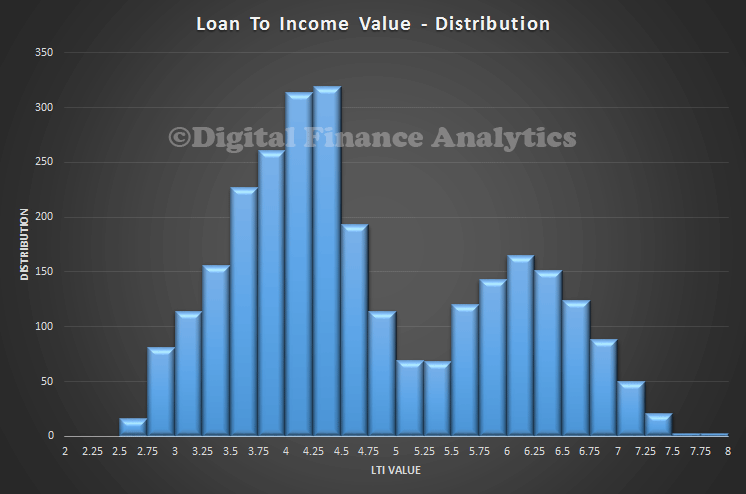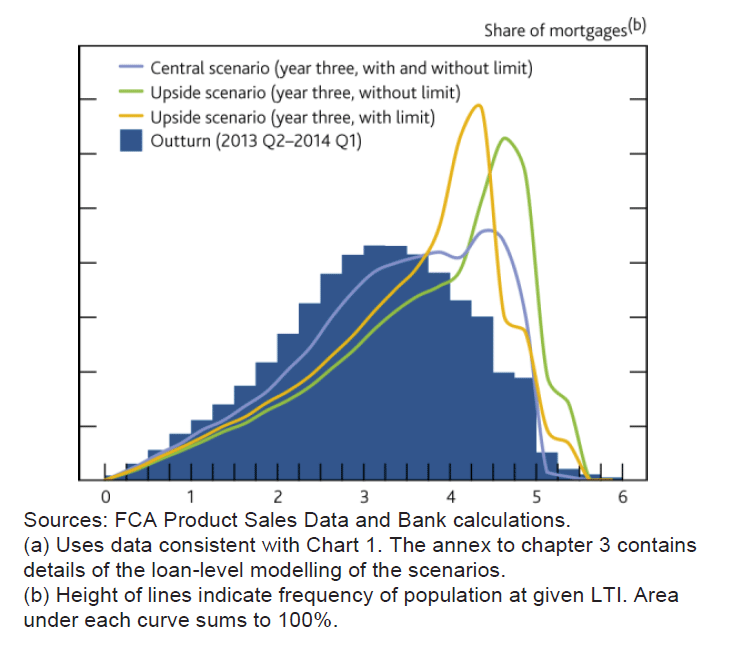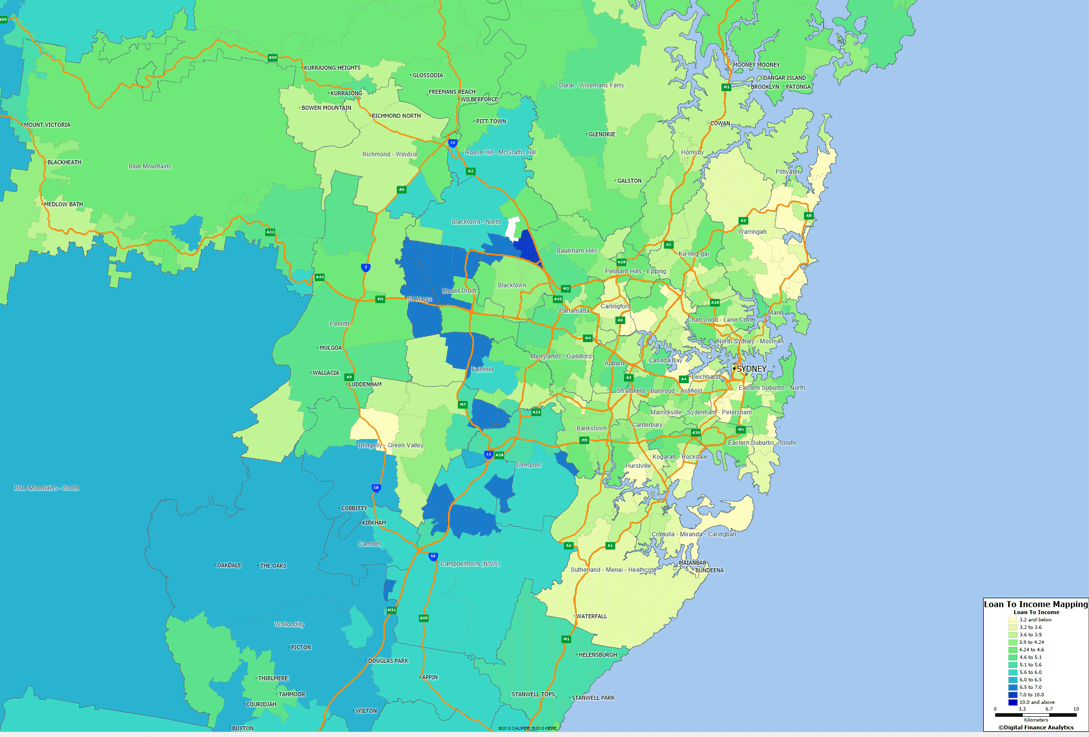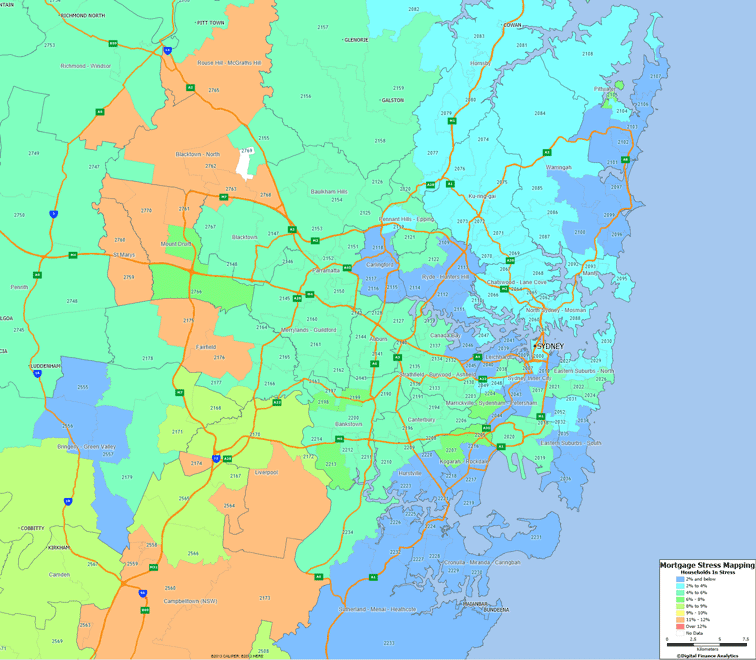By all recent accounts, Australian house prices are starting to cool.
And as the effect of macro-prudential measures and out-of-cyle rate hikes take hold, most analysts agree Sydney and Melbourne’s red-hot housing markets are unlikely to maintain their recent rate of growth.
Those market conditions have led some analysts to downgrade their forecasts for Australian banks, after the sector outperformed in recent years.
In September, Citi analysts outlined four factors which they expect will form a “boxed quartet” to weigh on bank earnings. That followed research from the UBS, where the banking team recommended that investors cut back on Australian bank stocks.
In particular, UBS cited risks around the ratio of household debt to disposable income in Australia, which is approaching 200%.
In addition to the banking sector, the extended debt-to-income ratio of many households has been cited as a key risk for the Australian economy, with consumers facing a “consumption crunch” from refinancing mortgages with low wage growth and rising energy costs.
In that context, the chart below from Morgan Stanley provides an interesting backdrop for how each of Australia’s major banks approach their lending practices with respect to customer income.
It shows the average loan-to-income (LTI) ratio of Australian mortgage holders is around 4.9 times, but among the major banks, the numbers vary quite considerably.
ANZ leads the way and is materially higher than its competitors, with an average loan size of $624,000 at an LTI ratio of 6.3 times.
Here’s the chart:
Morgan Stanley said that ANZ’s higher LTI ratio is reflective of a recent push to grow its loan-book for residential mortgages, with a focus on the NSW market.
As part of that strategy, the bank has issued a higher number of mortgages within the last two years — around 45% of its loan-book compared to the industry average of 35%.
Research from Commonwealth Bank last month showed that Sydney has the highest average loan size in Australia, with average monthly loan payments of $3,031 per month.
Conversely, the lower LTI of Bendigo & Adelaide Bank reflected a focus on regional Australia, where property prices are generally lower.
Looking at the figures across the industry, Morgan Stanley expects housing loan growth to slow in 2018, as regulators place more scrutiny on rising household debt levels.
“Regulators are increasingly concerned about household debt growing ahead of incomes and have indicated that LTI should become part of loan underwriting criteria,” Morgan Stanley said.
As cited by UBS, this chart from the RBA last week shows that Australian household debt is approaching double the amount of disposable income:
The LTI figures were derived from Morgan Stanley’s AlphaWise survey on the strength of household finances.
The survey revealed some concerning trends around the outlook for domestic consumption, with around 40% of respondents saying they had zero or negative savings rates over the past year.
A pending “consumption crunch” for Australian consumers forms part of a negative economic backdrop which Morgan Stanley expects will weigh on bank earnings in 2018 and 2019.
“We have a negative stance on the banks given a challenging outlook for 2018-19 with a weaker domestic economic cycle, re-emerging headwinds to margins, fundamental change in the mortgage market, increased political and regulatory scrutiny, and an increase in non housing loss rates,” Morgan Stanley said.
Westpac is the only major bank in which Morgan Stanley is overweight. It has a neutral weighting on ANZ and is underweight NAB and CBA.
“Relative to peers, Westpac is a bigger beneficiary of loan repricing, has a lower credit risk profile, and offers better risk / reward at current multiples, so it is our preferred major bank,” Morgan Stanley said.
Tag: Loan To Income
UK Confirms Loan To Income Mortgage Lending Rules
The Prudential Regulation Authority (PRA) has set out the final rules for the Loan to Income (LTI) flow limit to operate on a four-quarter rolling basis.
This applies to banks, building societies, friendly societies, industrial and provident societies, credit unions, PRA-designated investment firms, and overseas banks in relation to their UK branch activities and the UK subsidiaries of the above mentioned firms.
In June 2014 the Financial Policy Committee (FPC) issued a recommendation to the PRA and the Financial Conduct Authority (FCA) advising that they should ‘ensure that mortgage lenders do not extend more than 15% of their total number of new residential mortgages at loan to income ratios at or greater than 4.5’.
The PRA proposed amending the PRA’s rules to change the current fixed quarterly limit into a four-quarter rolling limit. The limit would still need to be complied with and monitored at the end of every quarter, but the relevant flows of loans for compliance with the limit would now be those during a rolling period of four quarters in total, instead of one quarter as currently applied. These four quarters refer to the immediate quarter under consideration and the three quarters preceding it.
The PRA is now finalising the amendment to the Part proposed in CP44/16. The change is implemented with immediate effect, so that the loan to income (LTI) flow limit is applied on a four-quarter rolling basis from the current quarter onwards. This means that starting from Q1 2017 the PRA would monitor the LTI flow limit on a four-quarter rolling basis, which for Q1 2017 will be incorporating data on flows from Q2 2016, Q3 2016, Q4 2016 and Q1 2017. It is important to note that compliance under a fixed quarterly limit (which was the expectation before this change was introduced) automatically implies compliance with the limit under a four-quarter rolling basis.
Australian Household Loan To Income Ratios Are Worse Than In The UK
As we highlighted recently, the Bank of England is supporting the imposition of loan to income (LTI) ratios on banks in the UK, as a way to manage risks in the housing sector. So today, we start to explore loan to income data in Australia, captured though our rolling programme of household surveys. We start with some average national data, then look at the NSW picture in more detail. The UK recommendation, was to ensure that mortgage lenders do not extend more than 15% of their total number of new residential mortgages at Loan to Income ratios at or greater than 4.5. This recommendation applies to all lenders which extend residential mortgage lending in excess of £100 million per annum.
So whats the Australian data? We start by looking at the average LTI by postcode. The histogram shows the average LTI by household, calculated at a postcode level, and including all households with a mortgage. Income means the gross annual income, before tax or other deductions. We see that the LTI varies between 2.25 and 8. This is the ratio of household income to the size of the mortgage. We see a peak around 4.25-4.5 times, and a second peak at 6.25. Newer loans are more represented in this second peak.
Loan to income is a good indicator, because it isolates movements in house prices altogether from the data. The rule of thumb when I was working in the bank as a lender was to take 3 times the first income, and add one times the second income as a measure of the loan which was available to a household. Although rough, it was not too bad. Since then, lending rules have changed and criteria stretched. This ability to lend more has in turn led to higher house price inflation, thanks to supply/demand dynamics.
 The current data from the UK shows that LTI’s there are spread between 0 and 6. Interestingly, we see that in their forward scenarios they suggest an emerging second peak around an LTI of 5 times. So LTI’s in Australia are more stretched than in the UK. The regulators here do not report LTI data regularly. This is a significant gap.
The current data from the UK shows that LTI’s there are spread between 0 and 6. Interestingly, we see that in their forward scenarios they suggest an emerging second peak around an LTI of 5 times. So LTI’s in Australia are more stretched than in the UK. The regulators here do not report LTI data regularly. This is a significant gap.  We can map relative LTI average to post code. Here is the Sydney example, which highlights that there is a significant geographic concentration of high LTI loans in the western suburbs of Sydney.
We can map relative LTI average to post code. Here is the Sydney example, which highlights that there is a significant geographic concentration of high LTI loans in the western suburbs of Sydney.
 There is, further, a correlation between higher LTI loans and Mortgage Stress. Here is the stress data for Sydney.
There is, further, a correlation between higher LTI loans and Mortgage Stress. Here is the stress data for Sydney.
 These are concerning indicators. In addition as we dig into the data we find that the second peak in the LTI data relates to younger buyers, often first time purchasers. They are highly leveraged into the property market, and are surviving thanks to the very low interest rates available today. If rates rise, this could be a problem. This suggests that the loan to income situation in Australia is more adverse than the UK scene. Whilst we note the UK regulator is acting, there is no macro-prudential intervention in Australia. There should be.
These are concerning indicators. In addition as we dig into the data we find that the second peak in the LTI data relates to younger buyers, often first time purchasers. They are highly leveraged into the property market, and are surviving thanks to the very low interest rates available today. If rates rise, this could be a problem. This suggests that the loan to income situation in Australia is more adverse than the UK scene. Whilst we note the UK regulator is acting, there is no macro-prudential intervention in Australia. There should be.
Later we will present additional data across the other major centres, and examine in more detail those who are recent purchasers.



